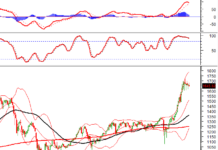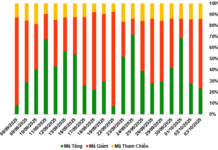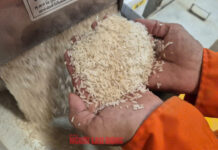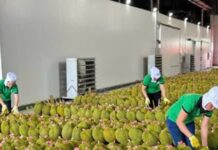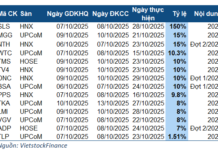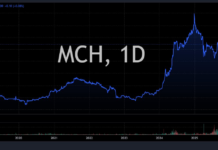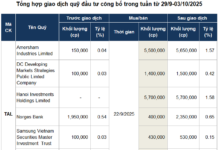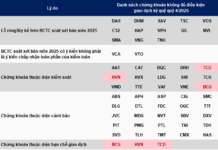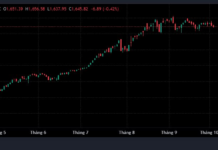The Vietnamese Mechanical Industry’s Evolution: Overcoming Challenges for a Competitive Edge
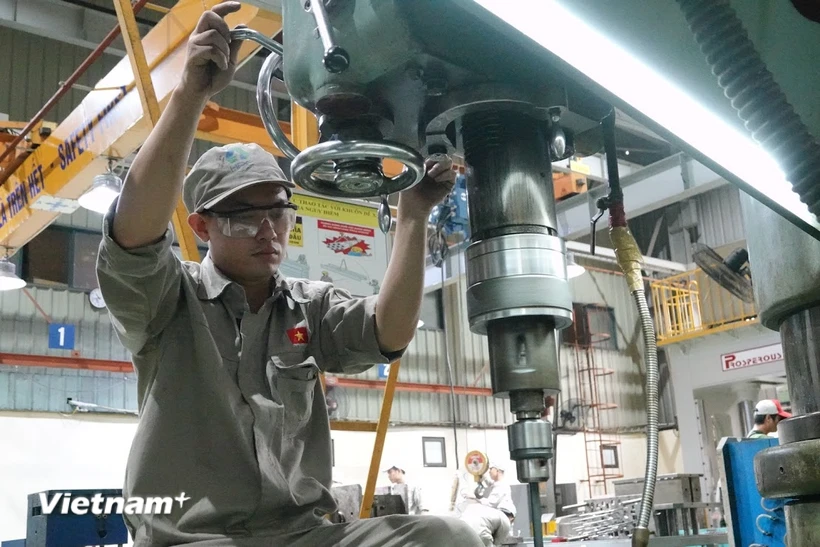
Vietnamese businesses have become tier-1 suppliers to foreign partners. (Photo: Duc Duy/Vietnam+)
|
Vietnam’s mechanical industry has witnessed positive transformations, gradually mastering technology, expanding investments, enhancing product quality, and increasing localization rates while developing the market.
Despite the vast potential for growth, experts assert that market diversification and expansion remain challenging for businesses in this sector due to intense competition from foreign companies, coupled with low competitiveness, lack of branding, and inability to attract potential customers…
Untapped Market Potential
According to expert estimates, from now until 2030, the mechanical industry market demand is approximately 310 billion USD, with the automotive market alone accounting for 120 billion USD. However, Vietnam currently meets only one-third of this demand.
Dr. Phan Dang Phong, Director of the Institute of Mechanical Engineering (Ministry of Industry and Trade), shared that in automotive and motorcycle production, foreign entities used to dominate assembly line operations. However, since 2012, the Institute of Mechanical Engineering has sent engineers to learn and acquire technology from Japanese and Korean partners. As a result, the institute can now independently design and manufacture automotive assembly lines.
In the realm of renewable and alternative energy, the institute successfully adopted and transferred technology for floating and anchoring systems in solar energy projects. Furthermore, numerous domestic businesses have achieved complete self-reliance, from design to fabrication and technical services, as evidenced by their contributions to the 2,400 MW Son La and 1,200 MW Lai Chau hydroelectric projects, which were completed ahead of schedule.
Nevertheless, Dr. Phong acknowledged that meeting the domestic and export market demands in the mechanical industry remains modest, particularly in the field of comprehensive equipment. For instance, in thermal power, hydropower, renewable and alternative energy, cement, or raw material production plants, local businesses fulfill less than 30% of the equipment demand.
“The reason for not meeting more of the demand is the lack of ‘leading enterprises’ that possess core technologies and have the capability and experience to undertake complete projects,” Dr. Phan Dang Phong explained.
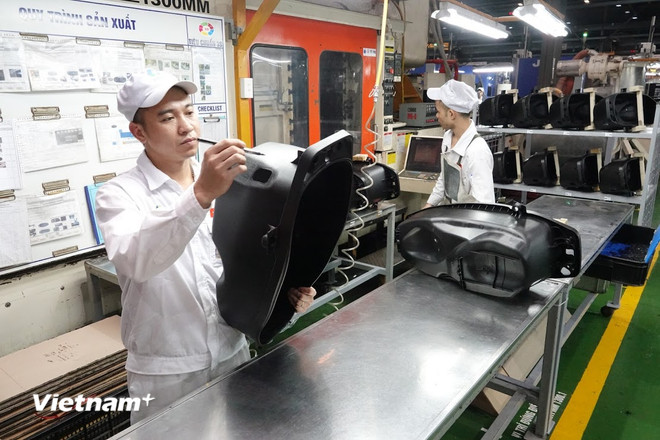
Numerous Vietnamese businesses have become tier-1 suppliers to foreign partners. (Photo: Duc Duy/Vietnam+)
|
Mr. Nguyen Duc Cuong, Vice President of the Hanoi Supporting Industry Association, pointed out that in the field of machine fabrication, foreign-invested enterprises dominate production activities in Vietnam. In contrast, local businesses, mostly small and medium-sized enterprises, are engaged in manufacturing components and accessories supplied back to these foreign-invested enterprises.
Producing a product typically takes domestic businesses (mainly small and medium-sized enterprises) 1.5 times longer than foreign enterprises due to their technological superiority. Consequently, foreign enterprises automate personnel management, quality control, and measurement processes, resulting in higher management and production costs and affecting competitive pricing.
Transforming for a Breakthrough
According to the Vietnam Association for Mechanical Industry (VAMI), there are approximately 3,100 businesses in the mechanical manufacturing industry, with 53,000 production facilities, accounting for nearly 30% of the total number of processing and manufacturing industrial enterprises in Vietnam. The domestic mechanical industry in machines, equipment, and machinery has gradually mastered and improved localization rates, creating a driving force for the development of other industries and the economy, directly and indirectly employing millions of workers.
Currently, Vietnam’s mechanical industry strengths lie in three main sub-sectors: motorcycles and motorcycle components and accessories; household appliances and tools; and automobiles and automobile components. The industry’s revenue exceeds 1.7 million billion VND and employs over 1.2 million workers.
At present, domestically produced metal components meet 85-90% of the demand for motorcycle production, 15-40% for automobile production, 20% for integrated equipment, 40-60% for agricultural machinery and engines, and 40% for construction machinery. Additionally, the industry satisfies approximately 10% of the demand for components for high-tech industries.
Specifically, local mechanical manufacturing has successfully produced and assembled various types of passenger cars, trucks, and buses. Motorcycle production has achieved a localization rate of 85-95%, meeting domestic demand and exporting, with notable enterprises such as Vinfast, Thanh Cong, and Thaco in the automobile sector.
Moreover, mechanical businesses are presented with significant opportunities as Vietnam participates in numerous free trade agreements. These agreements will enhance their competitive edge in exports, market expansion, and foreign investment attraction once they take effect.
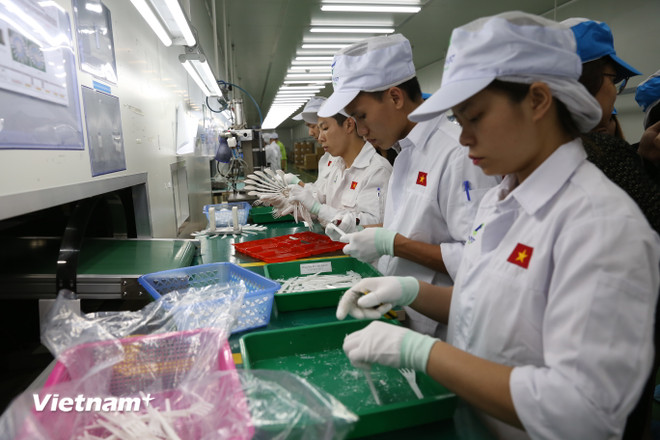
Automation is crucial for enhancing competitiveness. (Photo: Duc Duy/Vietnam+)
|
Mr. Cao Van Hung, Director of International Market Development at Smart Vietnam Precision Mechanics Joint Stock Company, shared that in recent years, Vietnamese businesses have significantly benefited from the wave of international market shifts. Smart, for instance, expects a 260-280% increase in revenue in 2024 due to surging demand from existing and new customers from key markets. To seize these market opportunities, Smart has heavily invested in its sales and research and development teams.
The sales team comprises capable individuals who can communicate and work with partners from different countries and bring projects from abroad. “As long as customers have ideas and samples, Smart will develop and help them create a complete product in Vietnam,” Mr. Hung shared, adding that this strategy has brought the company considerable success.
However, to enhance competitiveness in quality, Smart’s representative emphasized the need for investments in raw materials, machinery for production automation, international quality management systems, and a highly skilled workforce.
“Businesses hope that ministries and sectors will organize more trade promotion programs abroad to support customer connections. Additionally, for enterprises aspiring to become ‘leading enterprises,’ substantial resources are required, so policies should focus on the research and development aspect,” Mr. Hung suggested.
Emphasizing this perspective, Dr. Phan Dang Phong advised businesses to invest more in human resources, equipment, and technology to own their unique technologies and adapt to customer requirements. He continued that modernizing production lines is essential to achieving competitive pricing and ensuring quality, ultimately fostering product sustainability in the global supply chain.
Duc Duy
– 08:52 01/01/2025

